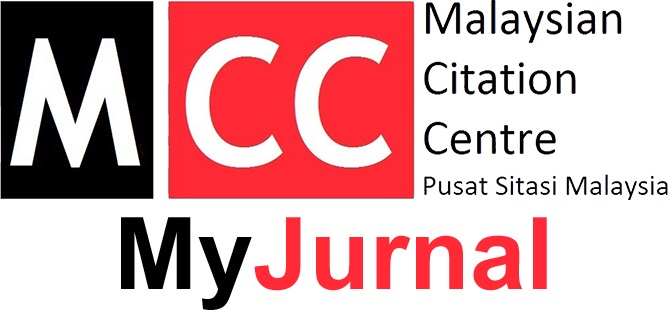ISOLATION AND IDENTIFICATION OF ENDOPHYTIC FUNGI OF Pandanus sp. AND Alpinia sp. FROM RESERVE FOREST UiTM NEGERI SEMBILAN
Keywords:
Alpinia sp., Colleotrichum sp. endophytic fungi, Lentinus sp., Pandanus sp.Abstract
Endophytes are an endosymbiont that colonize in plant without causing apparent disease. Medicinal plants have been proven as a host to endophytes fungi thus providing a rich reservoir of bioactive compounds. However, there is lack information available about medicinal plants associated endophytes. Therefore, in the present study, the presence of endophytic fungi inhabiting in leaves of Pandanus sp. and Alpinia sp. were isolated. Healthy and symptomless leaves of Pandanus sp. and Alpinia sp were surface sterilized and used for the isolation of endophytes. Variation in the colonization frequency of endophytic fungi was observed in leaves of both species. Relatively, leaves of Pandanus sp. were found to have greater colonization frequency (16.7%) as compared to leaves of Alpinia sp. (8.3%). A total of 3 fungal isolates were obtained and identified based on the morphology of fungal cultures and spores. Among them one unidentified isolate (P2) was group to Zygomycota phylum. Other two isolates were identified as species belong to Lentinus sp. (A1) and Colleotrichum sp. (P1). Finding in this study suggest the possible exploration of many such bioactive compounds from this potential fungus.
References
Ariffn, S.A. (2013). The Antitumour Properties of Endophytic Fungi from Marine Plants in Malaysia. Doctoral dissertation, University of Otago.
Azeman, N. H. (2009). Essential oil from five Alpinia sp. of Sarawak, 24.
Bacon, C.W. & White, J.F. (2000). Biotechnology of Endophytes. New York: Macel Deker Inc.
Barseghyan, G.S. & Wasser, S.P. (2010). Species diversity of hypogeous Ascomycetes in Israel. Mycobiology, (38)3: 159-165.
Bungihan, M.E., Tan, M.A., Takayama, H., Cruz, D.E. & Nonato, G.M. (2013) A new macrolide isolated from the endophytic fungus Colletotrichum sp. Philippine. Science Letters, 6: 57–73.
Ellis, M.B. & Ellias, J.P. (1971). Microfungi on land. An Identification Handbook. Richmond Publishing, Slough.
Jariwala, B. & Desai. B. (2018). Isolation and identification of endophytic fungi from various medicinal plants. Bmr Microbiology, 4(1). 1-7.
Carbungco, E. S., N. B. Pedroche, V. A. Panes & T. E. Dela Cruz (2017). Identification and characterization of endophytic fungi associated with the leaves of Moringa oleifera Lam. Acta Horticultural, 373-380.
Chandra S. (2012). Endophytic fungi: novel sources of anticancer lead molecules. Application Microbial Biotechnology, 95:47–59.
Vijaya T., P. Duggina., V. R. Netala,Kalla, M. Chandra, V. Nagam & Desaraju S.B. (2013). Isolation and characterization of endophytic fungi from endemic medicinal plants of Tirumala Hills. Journal Life Science Biotechnology & Pharmacology Research, 2(3), 367-373.
Divya, C.R., M.S. Sharada & Ashwini V. (2017). Isolation and identification of endophytic fungi in Trigonella foenum-graceum L. and their antibacterial activity. Imperial Journal Interdisciplinary Research, 2(9):516-21.
Kaushik, D., Yadav, J., Kaushik, P., Sacher, D., & Rani, R. (2011). Current pharmacological and phytochemical studies of the plant Alpinia galanga. Journal Chinese Integrated Medical, 10(1):1061-1065.
Laluces, H. M. C., A. Nakayama, M. G. Nonato, Edison, T. & Tan, M. A. (2015). Antimicrobial alkaloids from the leaves of Pandanus amaryllifolius. Asian Journal Pharmacology Clinical Research 5(10), 151–153.
Li, S., J. Huang, R.C. Zhou, S.R. Xu, & Jin Y.X. (2011). Isolation and Identification of Endophytic Fungi from Actinidia macrosperma and Investigation of Their Bioactivities. Evidence Based Complement Alternative Medicine, 382742.
Maroof A., H. Muzaffer, K. D. Manoj and Sanjana K. (2012). Isolation of microbial endophytes from some ethnomedicinal plants of Jammu and Kashmir. Journal National Production Plant Resources, 2 (2):215-220.
Meifei E. B., A. T. Mario, T. Hiromitsu, E. E. Thomas, dela Cruz & Maribel G. N. (2013). A new macrolide isolated from the endophytic fungus Colletotrichum sp. Philippine Science Letters 6(1), 57-73.
Orlandelli, R. C., R. N. Alberto, C. J. Rubin Filho & Pamphile, J. A. (2012). Diversity of Endophytic Fungal Community Associated with Piper hispidum (Piperaceae) leaves. Genetics and Molecular Research, 11(2), 1575–1585.
Panka, D., D. Piesik, M. Jeske, & Baturo-Ciesniewska, A. (2013).Production of phenolics and the emission of volatile organic compounds by perennial ryegrass (Lolium perenne L.) Neotyphodium lolii association and response to infection by Fusarium poae. Journal Plant Physiology 170, 1010–1019. doi: 10.1016/j.jplph.2013.02.009
Rajagopal, K. & Suryanarayanan, T.S. (2000). Isolation of endophytic fungi from the leaves of neem (Azadirachta indica A.Juss). Current Science. 78 (11): 1375-1378.
Rajeswari, S., R. Revathi & Arvind, P. D. (2017). Isolation and identification of endophytic fungi from Terminalia chebula of Eastern Ghats, TamilNadu. Asian Journal Pharmacology Clinical Research, 10(4), 21-23.
Satpute, S. B. & Vanmare, D. J. (2017). In Vitro Antifungal Activity of Tamarindus indica L. Extract Against Pathogenic Fungi. International Journal of Botany Studies, 2(3), 25–28.
Selim, K.A., El-Beih A.A., AbdEl R.T.M. & Diwany A.I. (2012). Biology of Endophytic Fungi. Current Research in Environmental & Applied Mycology, 2:31-82.
Sivaramakrishnan, S. C. Prabukumar, K. Rajkuberan & Ravindran (2015). Isolation and characterization of endophytic fungi from medicinal plant Crescentia cujete L. and their antibacterial, antioxidant and anticancer properties. International Journal Pharmacology Sciemce, 7(11), 316-321.
Tibpromma, S., Hyde, K.D., Bhat, J.D., Mortimer, P.E., Xu, J., Promputtha, I., Doilom, M., Jun-Bo, Yang, A.M.C. & Karunarathna, S.C. (2018) Identitcation of endophytic fungi from leaves of Pandanaceae based on their morphotypes and DNA sequence data from southern Thailand. MycoKeys 33: 25–67.
Tongkantha, S., Lumyong, S., McKenzie, E.H.C. & Hyde, K.D. (2008) Fungal saprobes and pathogens occurring on tissues of Dracaena loureiri and Pandanus spp. in Thailand. Fungal Diversity 30: 149–169.
Downloads
Published
Issue
Section
License
Copyright (c) 2019 Journal of Academia

This work is licensed under a Creative Commons Attribution-NonCommercial-NoDerivatives 4.0 International License.











